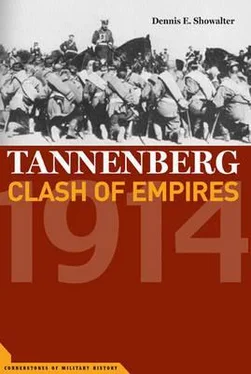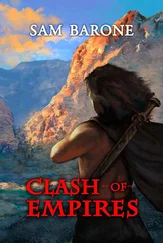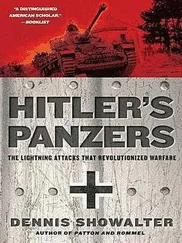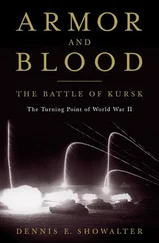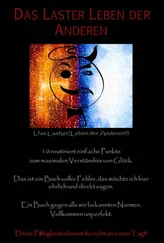Hauptreserve Thorn
35th Reserve Division
5th Landwehr Brigade—2nd, 9th Landwehr Infantry
20th Landwehr Brigade—19th, 107th Landwehr Infantry
3rd Reserve Heavy Cavalry
6th Landwehr Brigade—34th, 49th Landwehr Infantry
70th Landwehr Brigade—5th, 18th Landwehr Infantry
Hauptreserve Königsberg (engaged at Gumbinnen)
Ersatz Brigade—1st, 2nd Ersatz Rgts. ( Ersatz bns. of 4th Grenadiers, 33rd Fusiliers, 41st, 44th, 45th Infantry)
9th Landwehr Brigade—24th, 48th Landwehr Infantry
1st Reserve Dragoons
Outline Order of Battle Russian Northwest Front
1ST ARMY
II Corps—26th, 43rd Infantry Divisions
III Corps—25th, 27th Infantry Divisions
IV Corps—30th, 40th Infantry Divisions
XX Corps—28th, 29th Infantry Divisions 56th Infantry Division
1st Guard Cavalry Division
2nd Guard Cavalry Division
1st Cavalry Division
2nd Cavalry Division
5th Rifle Brigade
1st Independent Cavalry Brigade
1st Heavy Artillery Brigade
2ND ARMY
I Corps—22nd, 24th Infantry Divisions
VI Corps—4th, 16th Infantry Divisions
XIII Corps—1st, 36th Infantry Divisions
XV Corps—6th, 8th Infantry Divisions
XXIII Corps—3rd Guard, 2nd Infantry Divisions
4th Cavalry Division
6th Cavalry Division
15 th Cavalry Division
1st Rifle Brigade
2nd Heavy Artillery Brigade
Note: A Russian rifle brigade had four two-battalion rifle regiments.
PART I
THE FASHION TO MAKE WAR
1
The Circus Rider of Europe
The relationship between Imperial Germany and Tsarist Russia before 1914 was a complex mixture of attraction and repulsion. Anarchist Michael Bakunin’s statement that nothing united Slavs like their hatred of Germans can be balanced by the German impact on Russia’s Westernization. France might provide inspiration, but it was a long road from Paris to St. Petersburg. German professors filled most of the posts at the University of Moscow and the Academy of Sciences. German pietism shaped Russian religious thought. German concepts of natural law and philosophy prepared Russian ground not for individualism and empiricism but for Aufklärung, with its sensibility, its religiosity, its collectivism. 1
The assimilation of this quasi-German heritage was at best incomplete. Nevertheless in the aftermath of the Napoleonic Wars a bilingual, bicultural elite developed, an elite consciously seeking to fuse the best of Russian and German. 2An emerging Russian intelligentsia, initially self-absorbed and isolated, turned eagerly to Germany for cultural and intellectual models. The philosophy of Hegel and the literature of the Romantics were uncritically imitated east of the Vistula. Students were regularly sent to Germany for advanced education even in the darkest days of Nicholas I. Under Nicholas, too, a system of secondary schools on the German model was established for the entire empire. German scholars and artists basked in the admiration of their Russian counterparts. In turn they praised the spiritual depths of the Slavic soul and the unlimited promise of the Russian people. 3
The relationship was by no means one-sided. Restoration and Vormärz Prussia accepted the Russia of Alexander and Nicholas as a bulwark against Austrian dominance, French revanchism, and popular revolution. 4Militarily too the traditional positions of Prussia and Russia reversed themselves during the Napoleonic Era. Prussia’s martial arrogance was humbled at Jena and Auerstädt. After 1813 the war-hardened Russian army, with its long-service peasant conscripts, compared all too favorably in all too many respects with the improvised Prussian forces. The shortcomings of the postwar Prussian army seemed even more glaring when compared with the situation in Russia. Officers facing limited budgets periodically turned longing eyes to Russia, where the soldier-tsar Nicholas I appeared to stint his military establishment of nothing, where elaborate maneuvers were staged regardless of cost, where developments in weapons, organization, and tactics could be tested on an army-corps scale. 5
The Prussian foreign office recognized that Russia’s diplomatic position in Europe, particularly after 1849, was less solid than it seemed. It also recognized Prussia’s geographic, economic, and military weaknesses vis-à-vis both Western and Eastern Europe. Commitment to Russia meant the corresponding risk of becoming the Tsar’s battering ram against liberalism in general and France in particular. Prussia’s “active neutrality” during the Crimean crisis of 1853–55 was deliberately designed to sustain good relations with Russia at the lowest possible price. The policy’s initial success is indicated by Russian foreign minister K. R. Nesselrode’s belief that the Prussian connection must become the cornerstone of Russia’s relations with France in the aftermath of the Crimean War. Ultimately, however, Russia remained more concerned until 1866 with mending French fences than with supporting the aims of a Prussia whose good will was often taken for granted and whose capacities to implement an independent foreign policy seemed derisory. 6
The Seven Weeks’ War of 1866 came as a corresponding surprise. Austria’s unexpected collapse confronted Russia with a fait accompli. Should she intervene, it would be not to preserve a structure but to restore one—with proportionately increased risks. Four years later, on October 31, 1870, Russia collected a price for her abstention by unilaterally repudiating those clauses of the Crimean settlement that provided for neutralization of the Black Sea.
Bismarck was long in forgetting the minicrisis this generated. With Germany’s armies too deeply stuck in the French tar baby to give him much freedom of action, the furious protests of Austria and Britain against Russia’s action bade fair to escalate into an European war. It took all of the chancellor’s skill to get the involved powers to a conference table, where Russia’s action was eventually legitimated—at significant cost to Bismarck’s nerves and with significant impact on his subsequent policies. 7
The new German empire inherited other liabilities in relating to its Tsarist neighbor. A rising generation of Russian intellectuals blamed fifty years of playing safe, of hiding behind piles of paper, on Teutonic influences that stifled Slavic warmth and spontaneity. Pedantry and pettifogging were common hallmarks of the German in Russian literature. Among the least sympathetic minor characters of War and Peace is Captain Berg, who knows the army regulations better than the Lord’s Prayer, yet sees nothing beyond them. Goncharov’s Oblomov depends essentially for its comic effect on the contrast between Oblomov, the lazy, slovenly, ultimately lovable Russian and the dignified, efficient, ultimately sterile German Stoltz.
Literary Germanophobia was reinforced by economic changes. In a Russia historically lacking a middle class, opportunities for emigrants and migrants of all ethnic backgrounds had been extensive. The upper levels of the economy and the higher ranks of the bureaucracy were by no means dominated numerically by men of German ancestry. Germans, however, particularly from the Baltic lands, constituted a highly visible element, one perceived as having a strong group identity. The Russian author who dubbed the Baltic Germans “the Mamelukes of the Empire” did not intend to pay them a compliment. 8
Russian nationalism in midcentury was also acquiring a sharp edge. A growing band of zealots, soldiers and bureaucrats, journalists and academicians, was developing a reasonably coherent set of visions conveniently grouped under the concept of Panslavism. These Panslavs increasingly agreed on Russia’s natural fitness for leadership of the Slavic communities. Works like Yuri Samarin’s Borderlands of Russia, published in 1868, went farther and demanded the Russification of frontier minorities: Baits, Jews, and especially Germans. 9
Читать дальше
